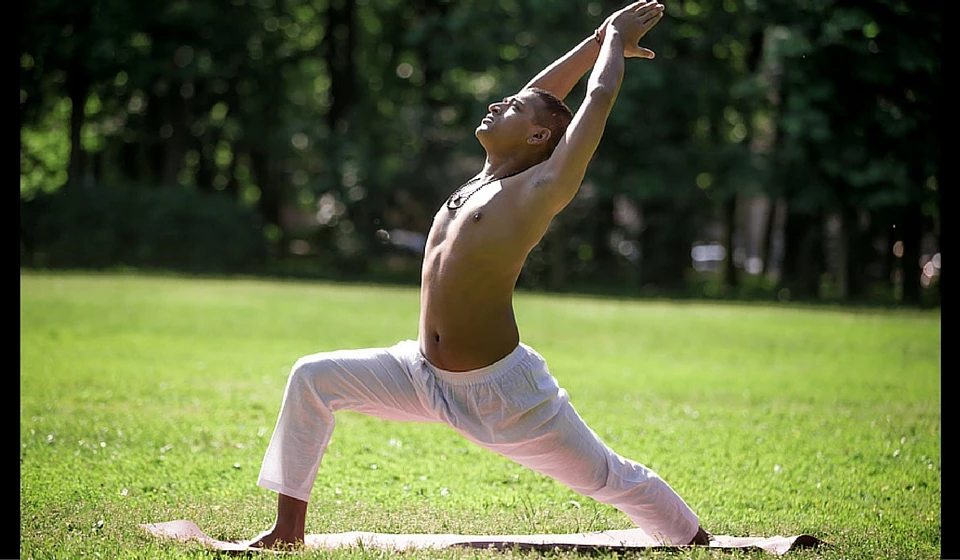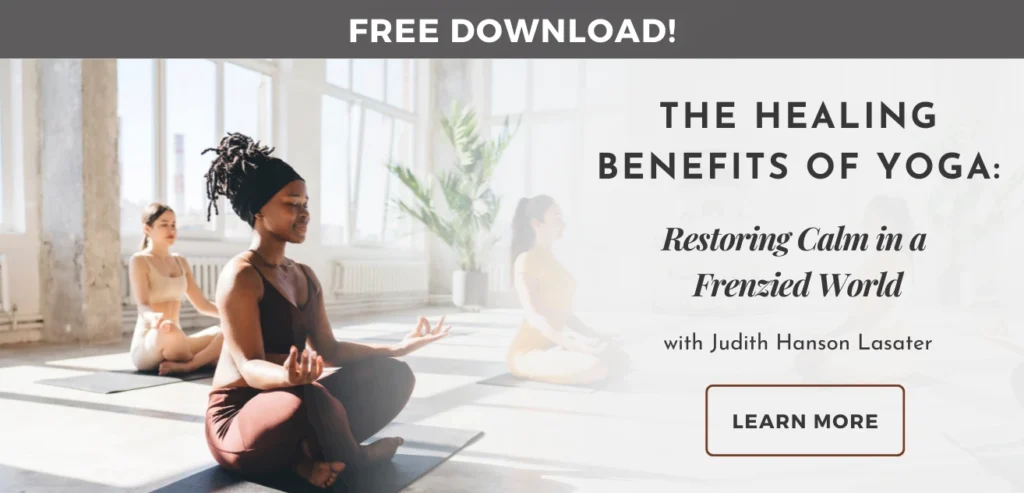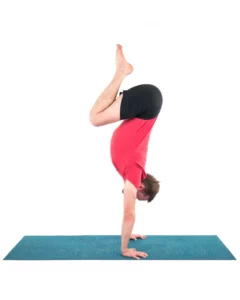Warrior I Pose: The Peaceful Warrior

In yoga, the Warrior poses are some of the practice’s foundational poses. The foundation of the Eight Limbs of Yoga is ahimsa (non-violence), or as Alistair Shearer translates it, “dynamic peacefulness.” We might well interpret “warrior” differently from our usual way of thinking about it. In yoga, the warrior is peaceful—dynamic, resolute and steady, but with a core of calm. Warrior I Pose (Virabhadrasana I) is a perfect balance of dynamic grounding and buoyant ease. In Warrior I Pose the lower body roots strongly into the ground, while the upper body rises up to the sky. This dynamic combination grounds and stabilizes as it generates an uprising energy that nourishes the spine and clears what I call mental “cobwebs.”
How to Practice Warrior I Pose
- Begin by standing with your feet hips-width apart at one end of a nonskid mat. Feel how your feet connect with the floor. Do you feel even weight across the feet—from right to left, from inside to outside, from the balls of the feet to the heels?
- Assess your energy: What are you bringing to the pose? Do you feel heavy or light in the body? Do you feel an upward or downward flow of energy? Is your energy agitated or calm?
- Step your right leg straight back about a leg length (three feet or so). Make sure your right foot is facing mostly forward, so that your toes are only slightly angled to the right. It’s okay if your right heel doesn’t reach the floor. Let it lift, but keep the right knee straight and extend strongly back through the leg.
- Now let your kidneys soften back into the low back so that the bottom ribs move back and your low back expands. As your lumbar area releases back, extend your right heel down a bit more.
- Do not try to square your hips. In Warrior I your front leg is in flexion and your back leg is in extension. The pelvis is not meant to be square in this situation. Squaring the pelvis when one leg is flexed and the other is extended can cause sacroiliac (SI) joint problems.
- With your hands on your hips, press down into your hipbones, encouraging grounding. Root strongly through the legs as you reach your arms up toward the sky, taking care not to jut your lower ribs forward as you raise your arms.
- Bend your left knee into a square, keeping the knee aligned over the lower leg so that it doesn’t roll either in or out. Keep bending your knee until it is directly over your heel.
- Make your lower body—from your pelvis to your feet—very heavy and grounded. Let the upper body—from the waist up to the fingertips—rise up and reach for the sky.
- Take 5 to 10 deep, relaxed breaths. Then press the feet into the floor to straighten the left knee.
- Step your right leg forward and return to standing with your feet hips-width apart. As you stand, note what has changed in your body as a result of practicing the pose.
- Repeat the process on the other side.
With its combination of grounded strength and lightness, Warrior I is the perfect pose to help you ease into change or simply to ground. Practice Warrior I when you feel tired, sluggish or nervous. And don’t forget to breathe slowly and deeply in the pose, so that the warrior you become in the pose is a peaceful one.
Also, read...
Which Is the Best Way to Come Into Triangle Pose?
Cat-Cow Pose (Marjaryasana-Bitilasana)
2 Restorative Yoga Poses to Calm Your Body and Mind
Related courses

Charlotte Bell began practicing yoga in 1982 and began teaching in 1986. She was certified by B.K.S. Iyengar in 1989 following a trip to Pune. In 1986, she began practicing Insight Meditation with her mentors Pujari and Abhilasha Keays. Her asana classes blend mindfulness with physical movement. Charlotte writes a column for Catalyst Magazine and serves as editor for Yoga U Online. She is the author of two books: Mindful Yoga, Mindful Life, and Yoga for Meditators, both published by Rodmell Press. She also edits Hugger Mugger Yoga Products’ blog and is a founding board member for GreenTREE Yoga, a non-profit that brings yoga to underserved populations. A lifelong musician, she plays oboe and English horn in the Salt Lake Symphony and the folk sextet Red Rock Rondo whose 2010 PBS music special won two Emmys.



